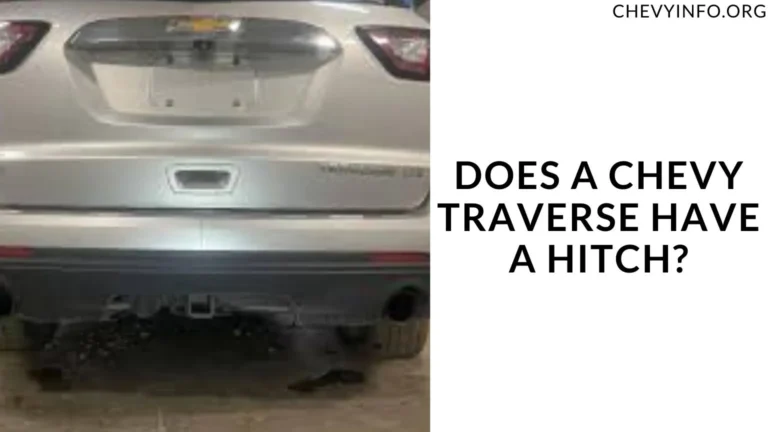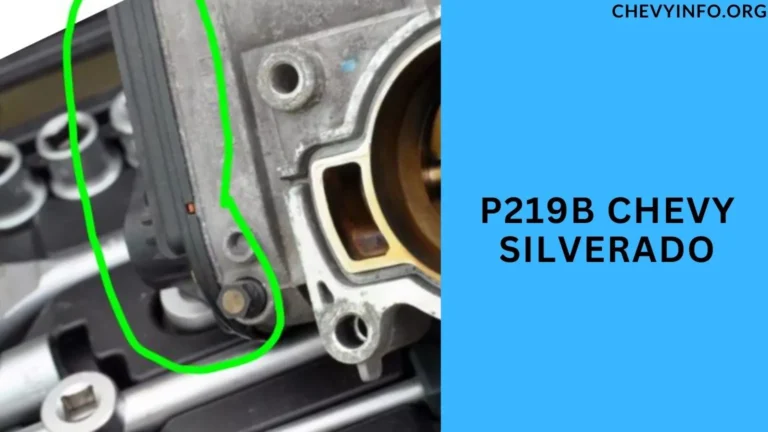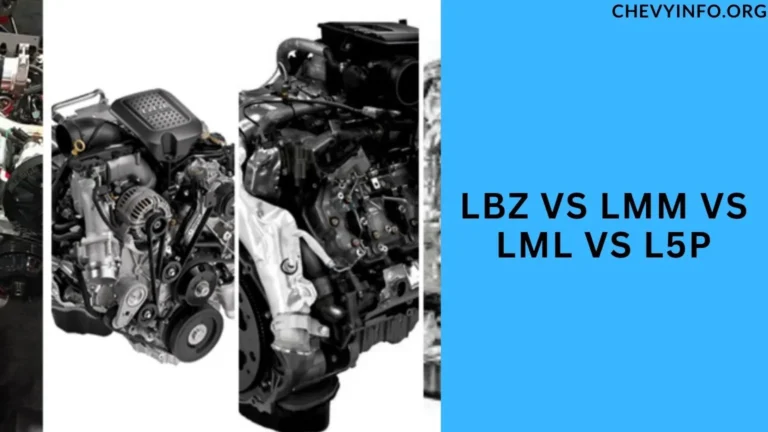Chevy 454 Firing Order (Diagram) of 2024
The Chevy 454 engine, also known as the Chevrolet 454, is a powerful and popular engine used in various vehicles, including trucks and muscle cars.
Chevy 454 Firing Order, Is renowned for its robust performance and durability, making it a favorite among automotive enthusiasts and professionals alike.
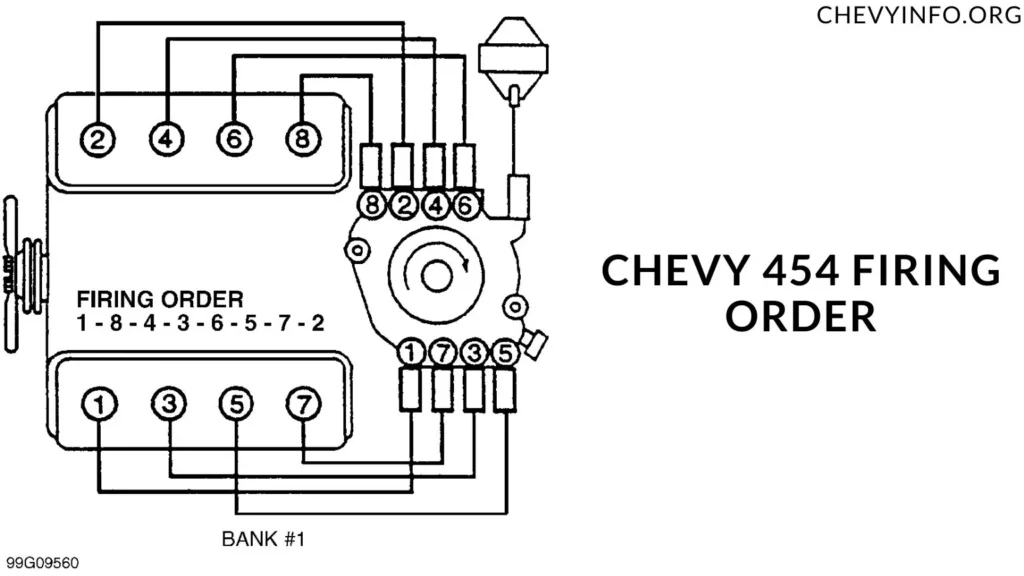
Importance of Firing Order in Engines
The firing order of an engine refers to the sequence in which the cylinders fire. It plays a crucial role in maintaining engine balance, performance, and overall smooth operation.
A correct firing order ensures optimal power delivery and prevents issues such as misfires and engine vibration.
Understanding the Engine Chevy 454 Firing Order
The firing order of a Chevy 454 engine is vital for its proper functioning. Typically, the firing order for a V8 engine like the Chevy 454 follows a specific pattern,
ensuring that each cylinder fires in a precise sequence. This sequence is designed to maximize power output and maintain engine stability.
Common Issues Related to Firing Order
Incorrect firing order or issues with ignition timing can lead to various problems, including engine misfires, reduced power, increased fuel consumption, and even engine damage.
Vehicle owners and mechanics need to understand these issues to diagnose and address them effectively.
Here are some of the most prevalent problems associated with firing order:
- Engine Misfires: Incorrect firing order can lead to engine misfires, where the fuel-air mixture fails to ignite properly in one or more cylinders. This can result in rough idling, reduced power, and increased exhaust emissions.
- Poor Fuel Economy: A disrupted firing order can cause inefficient combustion, leading to poor fuel economy. This means the engine consumes more fuel than necessary to generate the required power, resulting in increased fuel costs over time.
- Vibration and Rough Running: An incorrect firing order can cause the engine to run unevenly, leading to vibrations and a rough-running engine. This not only affects driving comfort but also indicates potential damage or wear on engine components.
- Loss of Power: When cylinders fire out of sequence due to a firing order issue, it can result in a loss of engine power. This can be especially noticeable during acceleration or when towing heavy loads, impacting the vehicle’s performance and responsiveness.
- Engine Overheating: In some cases, an incorrect firing order can contribute to engine overheating. This is because improper combustion can lead to excessive heat buildup within the engine, potentially causing damage to vital components like the cylinder head or pistons.
- Excessive Exhaust Emissions: A disrupted firing order can lead to incomplete combustion, resulting in higher levels of pollutants in the exhaust gases. This can contribute to environmental pollution and may cause the vehicle to fail emissions tests.
- Ignition System Issues: Firing order problems can also manifest as issues within the ignition system, such as worn spark plugs, damaged ignition coils, or a malfunctioning distributor. Addressing the firing order can help prevent further damage to these components.
- Engine Damage: Prolonged operation with an incorrect firing order can lead to severe engine damage over time. This includes issues like scored cylinders, damaged valves, or even piston failure, necessitating costly repairs or engine replacement.
- Reduced Engine Lifespan: Continuously running an engine with a disrupted firing order can shorten its lifespan due to increased wear and tear on internal components. Regular maintenance and addressing firing order issues promptly are crucial for preserving the engine’s longevity.
- Difficulty Starting the Engine: In some cases, an incorrect firing order can make it difficult to start the engine, especially in colder conditions or after extended periods of inactivity. This can be frustrating for vehicle owners and may require troubleshooting to resolve.
Steps to Check and Adjust Firing Order
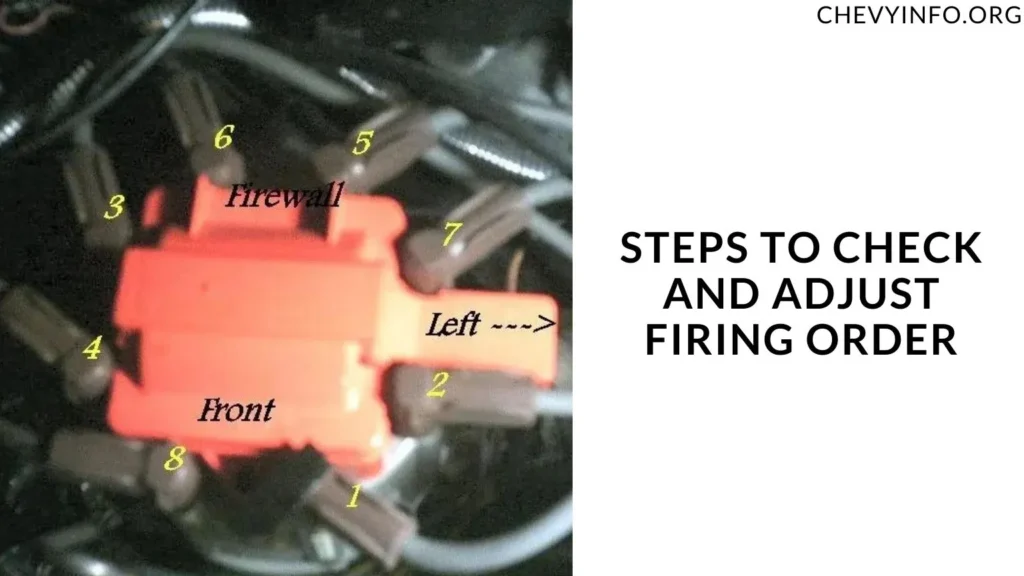
Checking and adjusting the firing order of a Chevy 454 engine involves several steps. This includes inspecting spark plug wires, distributor cap, rotor, and ignition timing.
Regular maintenance and periodic checks can help ensure that the firing order remains accurate and optimized for performance.
Here are the steps to check and adjust the firing order:
Consult the Manual
Refer to the vehicle’s owner’s manual or service manual to determine the correct firing order for your specific engine model.
The firing order can vary depending on the engine configuration (e.g., inline, V-shaped, or flat engine).
Identify Cylinder Numbering
Locate the cylinder numbering on your engine. Typically, cylinders are numbered sequentially from one end of the engine block to the other.
For example, in a V8 engine, cylinders may be numbered 1 to 8, with cylinder 1 usually being on the front driver’s side.
Inspect Spark Plug Wires
Visually inspect the spark plug wires and ensure they are connected to the correct spark plugs according to the firing order. Each spark plug wire should correspond to a specific cylinder based on the firing order sequence.
Check the Distributor Cap and Rotor
If your engine uses a distributor ignition system, check the distributor cap and rotor for any signs of wear, corrosion, or damage.
Clean or replace these components as needed to ensure proper electrical contact and ignition timing.
Verify Ignition Timing
Use a timing light and a timing mark on the engine’s harmonic balancer or timing cover to verify the ignition timing.
Follow the manufacturer’s specifications for the correct timing setting and adjust if necessary using the distributor or electronic ignition system.
Perform Cylinder Compression Test
Optionally, perform a cylinder compression test to check the compression levels in each cylinder. Low compression in a specific cylinder may indicate a timing or firing order issue that needs further investigation.
Adjust Spark Plug Firing Sequence
If you determine that the firing order needs adjustment, carefully disconnect and reposition the spark plug wires on the distributor cap according to the correct firing order sequence. Double-check the cylinder numbering and wire connections to ensure accuracy.
Test Engine Operation
Start the engine and monitor its operation. Listen for smooth and consistent running, and check for any signs of misfires, rough idling, or unusual engine behavior. Revise the engine gently to confirm that power delivery is smooth and responsive.
Fine-Tune Timing if Necessary
Fine-tune the ignition timing using a timing light and adjust the distributor or electronic timing control as needed.
Follow the recommended timing specifications for optimal engine performance and fuel efficiency.
Perform Road Test
After adjusting the firing order and ignition timing, take the vehicle for a test drive to evaluate its performance under various driving conditions. Pay attention to acceleration, idle quality, and overall engine responsiveness.
Monitor and Retest
Monitor the engine’s performance over time and retest periodically to ensure that the firing order remains correct and the engine continues to operate smoothly. Address any issues promptly to prevent further problems or damage.
Importance of Regular Maintenance
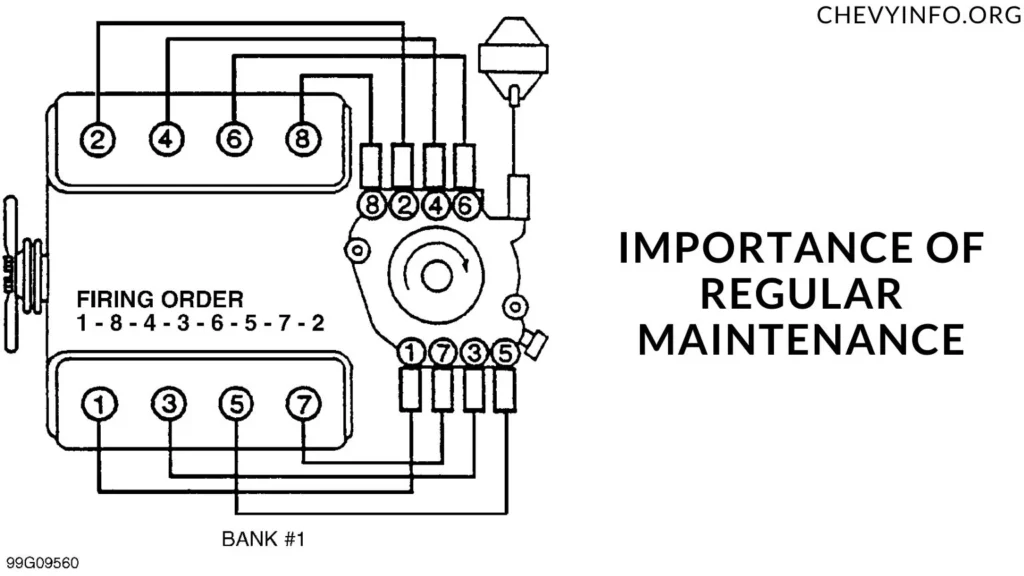
Maintaining the correct firing order is part of routine engine maintenance. Regular tune-ups, including checking ignition components and timing,
can prevent potential problems and extend the lifespan of the engine. It also contributes to efficient fuel consumption and overall vehicle performance.
Benefits of Proper Firing Order
Ensuring the proper firing order in a Chevy 454 engine offers several benefits, including:
- Improved engine performance and power delivery
- Reduced risk of engine misfires and vibrations
- Enhanced fuel efficiency and mileage
- Extended engine lifespan and reliability
- Better overall driving experience for vehicle owners
People also ask
What is the firing order for a 454 Chevy?
The firing order for a Chevy 454 engine is 1-8-4-3-6-5-7-2 for a standard V8 configuration.
What is the firing order on a 99 7.4 L?
The firing order for a 1999 7.4L Chevy engine is 1-8-4-3-6-5-7-2 for a standard V8 configuration.
What is the firing order for all block Chevy?
The firing order for all small block Chevy engines is 1-8-4-3-6-5-7-2, and for big-block Chevy engines, it’s typically 1-8-4-3-6-5-7-2 as well.
What is the firing order for a 4 cylinder Chevy?
The firing order for a 4-cylinder Chevy engine is usually 1-3-4-2.
Conclusion
In conclusion, understanding and maintaining the correct firing order in a Chevy 454 engine is essential for optimal performance and longevity.
By following proper maintenance procedures and addressing any issues promptly, vehicle owners can enjoy smooth engine operation and avoid costly repairs.

Henry Worner, a seasoned automotive expert with over 13 years of experience in car repair, maintenance, and performance enhancement, ChevyInfo.org was born out of a passion for Chevrolet vehicles. Henry’s deep-rooted love for everything Chevy has driven him to create a platform where fellow enthusiasts, car owners, and anyone interested in Chevy cars can find valuable insights, tips, and guidance.



